28 September 1778 Monday
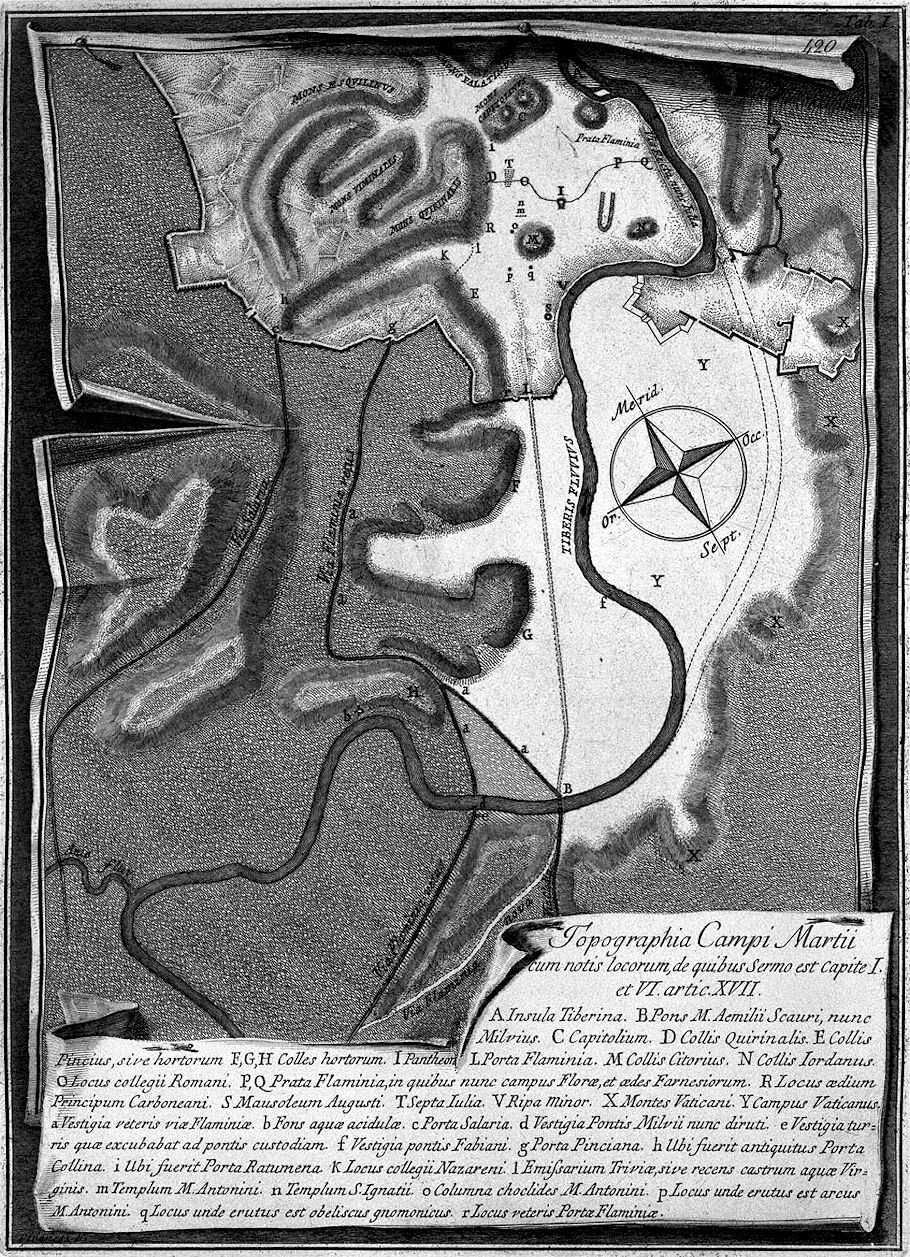
Topographical map of the Campus Martius, 1762.
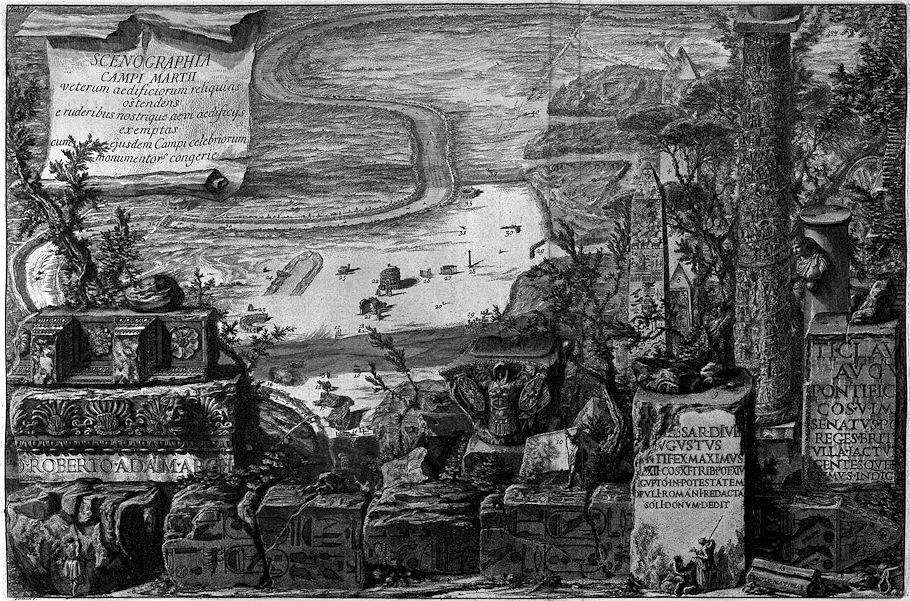
Scenographia [view] of the Campus Martius, 1762.
47 y.o. Francesco Piranesi 1805[?]
Le Antichità della Magna Grecia Parte III
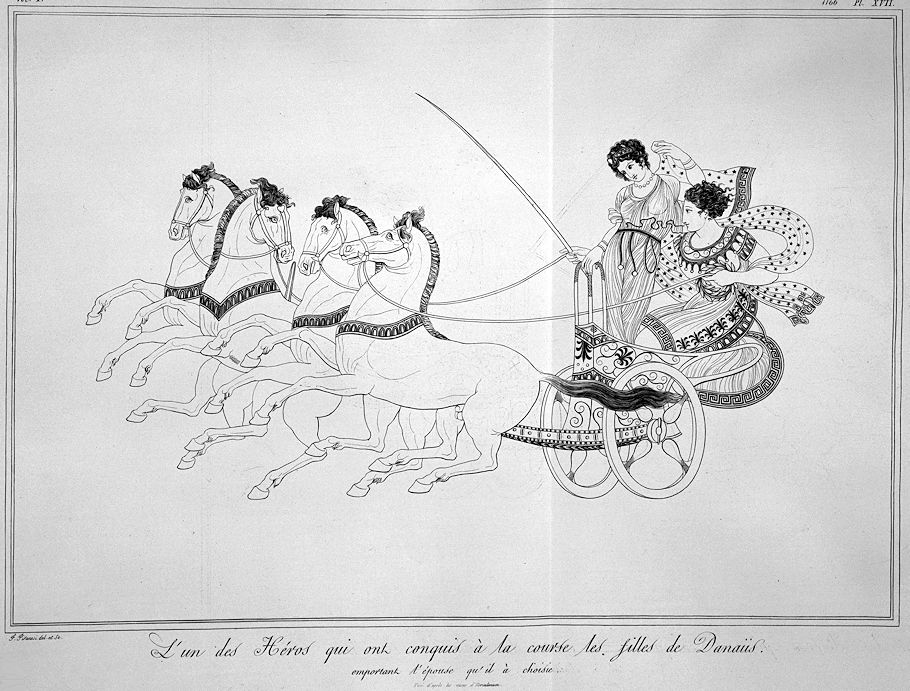
One of the Heroes who conquered the daughters of Danaüs in the race. taking away the wife he chose. Taken from the vases of Herculaneum.
F. Piranesi del et Sc.
28 September 1812 Monday
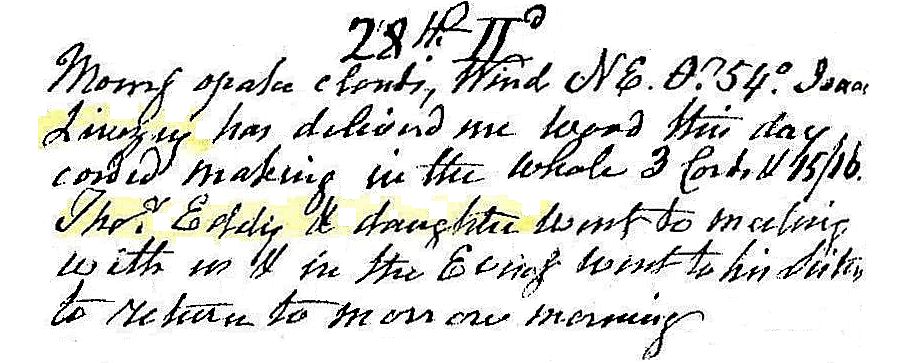
Morning opaque clouds, wind NE, temperature 54°. Isaac Livezey has delivered me wood this day, corded making in the whole 3 cord and 15/16. Thomas Eddy and daughter went to Meeting with us and in the evening went to his sisters to return tomorrow morning.
28 September 1999
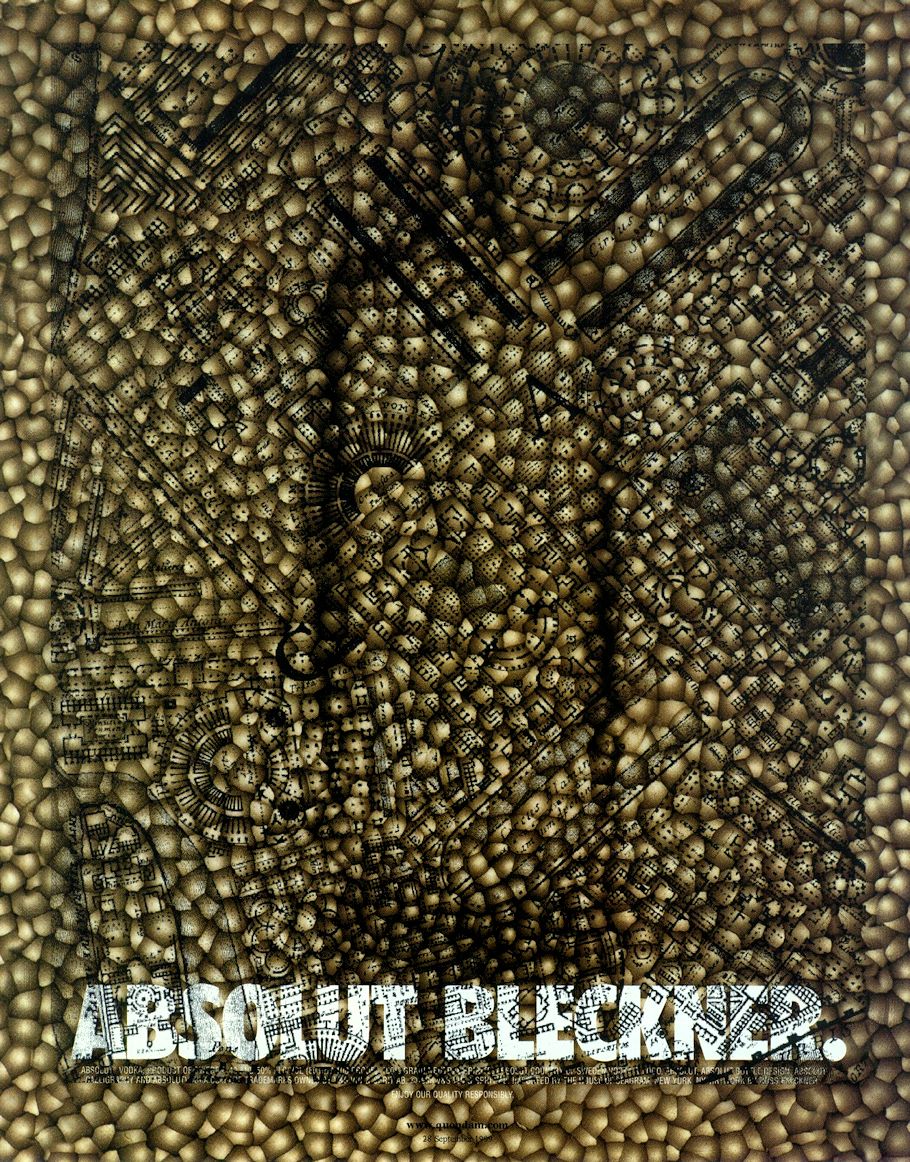
pieces/palimpsest 03
28 September 2001
11 Sept. 2001 considered chronosomatically
0. re-read "The Gauge" and "(chronosomatically) Contemplating the Navel."
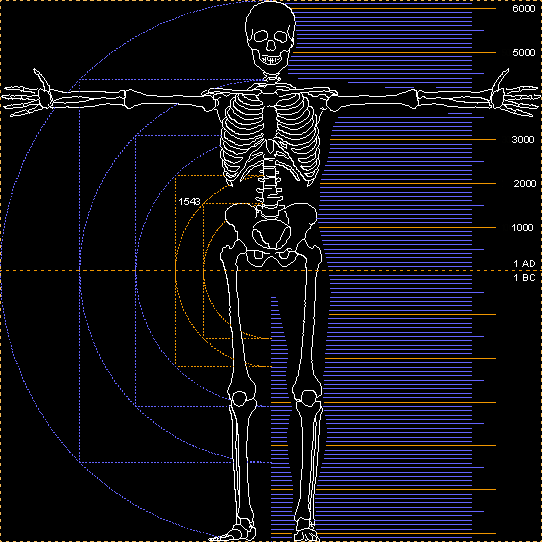
1. Note that 2001 AD slices through the body at the lowest tips of the rib cage. Note also that the top-most edges of the hip bones correspond with the early years of global exploration (e.g., Magellan's global circumnavigation in 1521).
2. Roughly the last 500 years correspond to that part of the body where there is no skeleton along the corporal periphery (only the spinal column in the background). This corporal hiatus is also where the body most readily and freely expands.
3. Within the Timepiece notes, the new and sudden appearance of the tips of the rib cage mark the beginning of the end of humanity's unrestricted expansion. Additionally, the polarized duality of the rib cage tips mark new polarized extremes within humanity. Moreover, the new corporal extremes are indeed structural, if not also ultimately protective.
4. "(chronosomatically) Contemplating the Navel" relates the historical events that correspond with the slice of the body that simultaneously cuts through the upper-most edge of the hip bones and the navel. The events of 11 September 2001 (particularly, and with full ironic inversion of unrestricted expansion, the dual implosions of the World Trade Center) correspond with the slice of the body where both lowest tips of the rib cage are now firmly and simultaneously present.
5. There is much hope for the future of humanity in that the rib cage gradually manifests a strong and protective structural network, even thought oblique opposite-ness is also part of the make-up. Ultimately, however, the rib cage forms a full ring when it reaches the same level as the heart (approximately 1100 years from now).
According to chronosomatics, what has changed for humanity since 11 September 2001 is that the era of completely unrestricted expansion has come to its 'corporeal' limits. The notion of more and more forthcoming peripheral limits, however, is something that humanity (especially the "West") cannot deny.
28 September 2003
Re: Good Art.
Helena is credited with 'building' the Basilica of the Nativity and the Basilica of the Ascension (now long demolished and replaced by a mosque nearby). Regadless of the silence of fourth century historians as to Helena having had anything to do with the building of the Basilica of the Holy Sepulcher, her presence in the Holy Land during the same time and as an 'architect' points to her active role at Golgotha as well. (Of course, Constantine as ruling male gets credit above everyone else for doing all this 'architecting' of Christianity.)
The site of the Holy Sepulcher in 325 AD was covered over by a Temple to Venus erected during the reign of Hadrian. Legend has it that the True Cross was found subsequent to the dismantling of the Temple of Venus. It is well known that many early Christian churches incorporated materials, mostly columns, from prior structures. In early 2002, when Palestinian fighters were staked out in the Nativity compound at Bethlehem, I read in Newsweek how six pink columns from the original (Helenian) Basilica of the Nativity are still part of the architecture there. I wonder if those pink columns came from a quondam Temple of Venus.
Re: Quite a reenactor!!!
I see the possibility of Seroux's work being enhanced via HTML in that throughout the text that accompanies each engraved plate there are references from an image or set of images on one engraved plate to other images on another or even several other engraved plates--hyperlinkage could be of benefit here. Moreover, I found that aspects/details of many buildings are distributed throughout the whole set of engravings. For example, a plan of a church may be displayed with other church plans of the same era, but a column from this church is depicted on another engraving that presents a vast variety of columns all arranged in chronological order. The same disbursement goes for details of arches, walls, and domes. In redoing the work utilizing HTML, not only can the work be recreated as originally published albeit with hyperlinks, but whole new 'plates' of drawings can be composed where (for the first time) all aspects of an individual building are displayed together, and these new displays can then be further worked via hyperlinks into the historical outline Seroux already established. I'd also like to add some new text to the Histoire.
Interestingly enough, the drawings (by many top-notch French architectural apprentices that Seroux hired) on which the engravings are based are now at the Vatican Library. And, according to Vidler, the original drawings far surpass the engraved drawings, mostly because the engraved drawings are much reduced from the original size.
My favorite 'discovery' to come out of this exercise so far is learning about the Basilica of St. Stefano, Bologna, thirteenth century, a religious compound where the Court of Pilate and the Church of the Holy Sepulcher, Jerusalem were/are specifically reenacted.
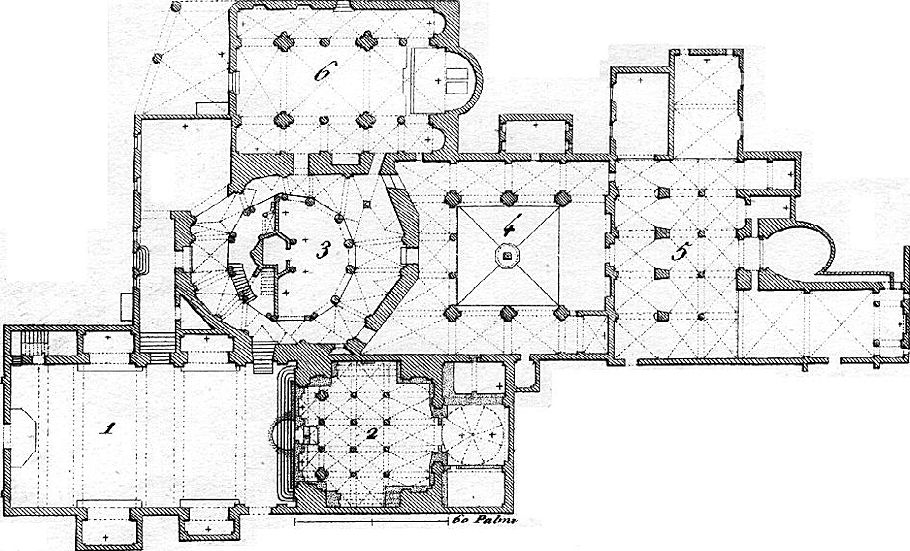
...the Basilica of St. Stefano, Bologna, thirteenth century, a religious compound where the Court of Pilate and the Church of the Holy Sepulcher, Jerusalem were/are specifically reenacted.
The six churches of which the plans are here given, nos. 1 to 6, are thus grouped at Bologna, under the title St. Stephen, the church no. 1, however, being more particularly dedicated to the saint.
2. Subterranean Church of S. Lorenzo, beneath that of St. Stephen, and serving as the Confession.
3. Church of the Holy Sepulchre; according to tradition the baptistery of St. Peter and St. Paul, no. 6, the first cathedral built at Bologna.
4. Another church, called the Court of Pilate.
5. Church of the Trinity.
6. Church of St. Peter and St. Paul.
28 September 2022 Wednesday
At 21:32 I thought of an apt subtitle for The Discovery of Piranesi's Final Project: a history making experiment, although ultimately it may not be used.
28 September 2023 Thursday
So far this week, I have been highly intense, too intense, quite beyond the usual high and low limits. The epilogue--"beginning of the end"--phase started manifesting in aspects of my life outside of this "discovery" project, or at least my frame of mind shifted into seeing various other aspects of my present life in terms of an epilogue mode. And, while yes the epilogues are just beginning, there is now simultaneously the feeling of having crossed a point where there is no turning back.
Too intense, also, in that a real fear of unpreparedness is definitely not unwarranted.
|